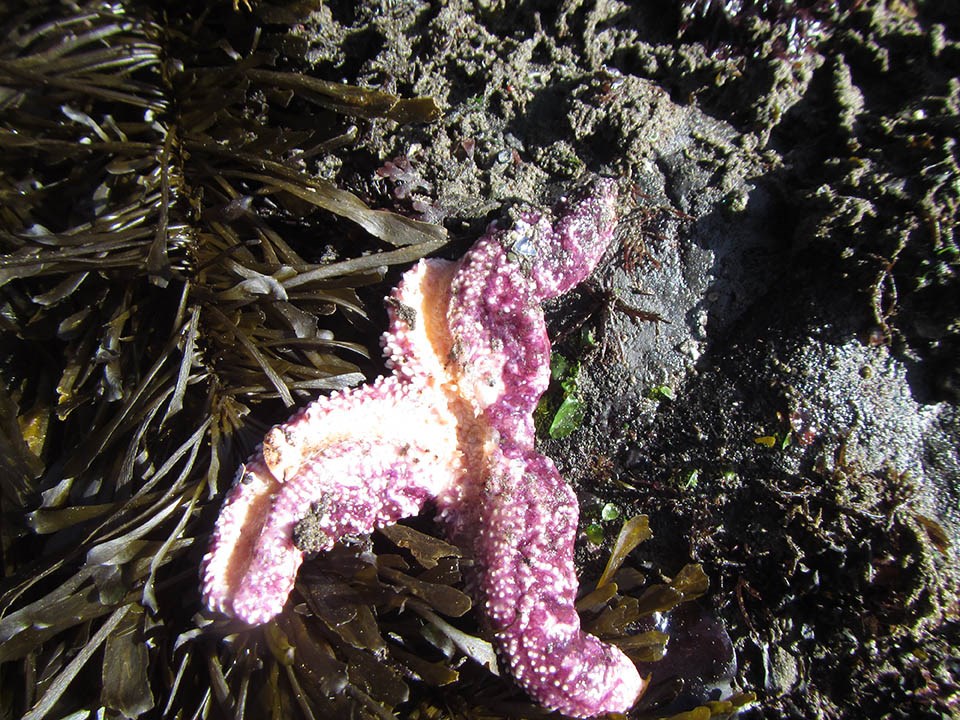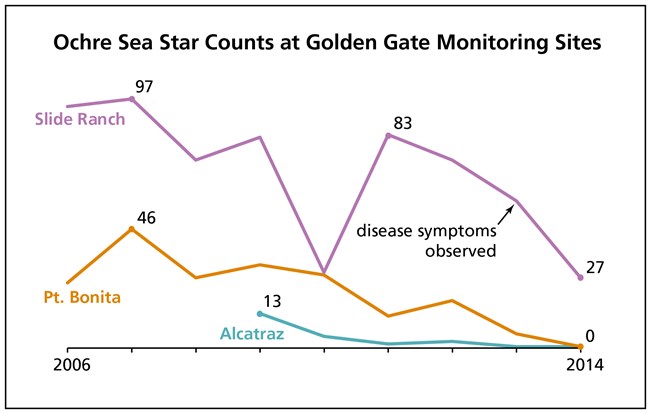Last updated: May 7, 2020
Article
Where Are All The Sea Stars?

NPS
November 2014 - Since 2013, sea stars from Alaska to Mexico have been dying in droves of a mysterious disease referred to as sea star wasting syndrome. Symptoms typically include the appearance of white lesions followed by tissue decay, body fragmentation and death, often within only a few days. Sea star die-offs are not necessarily unusual, but this one is unprecedented in terms of the numbers affected and the extensive area impacted.

In San Francisco Bay Area parks, species with disease symptoms include ochre stars (Pisaster ochraceus), sunflower stars (Pycnopodia helianthoides), and bat stars (Patiria miniata). Declines in ochre stars in particular have been documented by long-term rocky intertidal monitoring at Golden Gate National Recreation Area sites including Alcatraz Island, Point Bonita, and Slide Ranch. It is unclear whether the declines are due entirely to the wasting disease. June 2013 field notes for Slide Ranch indicate body parts and arms were gone suggesting disease symptoms. Monitoring at Point Reyes sites including Santa Maria Creek and Bolinas Point has also revealed sea star declines and evidence of disease.
This month, new research has been published identifying a previously unknown virus, sea star associated densovirus (SSaDV), and linking it to diseased sea stars. It likely weakens sea stars’ immune systems, but since it was also found in sea star tissues collected as far back as 1942, SSaDV is probably not the whole cause of the current die-off. In some areas, warming ocean temperatures correlated with die-offs may be a contributing factor. Elsewhere, the recipe of contributing factors remains a mystery. For now, scientists continue to monitor the progression of the outbreak, investigate how marine ecosystems are being affected by the loss of sea stars, and research new leads as to what, in addition to SSaDV, might be causing such high sea star mortality. They are also looking for signs of disease resistance that could help sea star populations recover. For further details, or to submit observations of healthy or diseased sea stars, visit www.seastarwasting.org. Information on rocky intertidal long-term monitoring sites, including data, is available at www.pacificrockyintertidal.org.
See more from the Bay Area Nature & Science Blog
